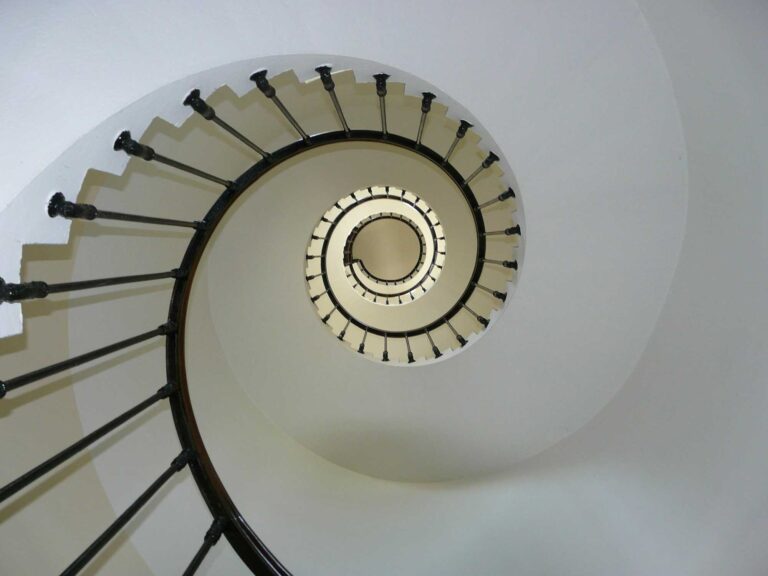Vertigo is a spinning sensation that typically results from abnormalities in the inner ear or brain.¹ It’s a type of vestibular dysfunction—an abnormality in the body’s “balance” system—that can cause you to feel dizzy, nauseous, and unsteady on your feet. It can also impact your vision, hearing, and eye movements.
When episodes occur, you may feel like the environment around you is moving or rotating. Or you could feel as though your entire body is spinning.²
Common vertigo symptoms
There are two types of vertigo: peripheral vertigo and central vertigo. Peripheral vertigo affects patients of all ages, whereas central vertigo more commonly impacts older adults.¹
Both types of vertigo can cause a moving or rotating sensation that leads to²:
- Dizziness
- Nausea
- Vomiting
- Hearing loss
- Ringing in the ears
- Difficulty focusing the eyes
“The diagnosis of vertigo is the most crucial step, as there are multiple causes,” says
Rachel Erickson, ND, founder of Virtual Integrative Specialists in Washington. “Natural treatments would depend largely on the cause.”
Dr. Erickson explains that postural orthostatic tachycardia syndrome (POTS), benign paroxysmal vertigo (BPPV), concussions, traumatic brain injury (TBI), and post-concussion syndrome are some reasons why people may feel dizzy or experience vertigo.
Peripheral vertigo causes
Peripheral vertigo—the most common type of vertigo—is typically triggered by problems with the vestibular labyrinth (the inner ear) or vestibular nerve (the “balance” nerve).¹,² These are parts of the vestibular system that maintain posture, gait, and eye movement.
Common causes of peripheral vertigo include vestibular disorders such as benign paroxysmal positional vertigo, neuritis, and labyrinthitis. Other potential causes include acoustic neuromas, middle ear infections, and perilymphatic fistula.³
Benign paroxysmal positional vertigo
BPPV is the most common cause of peripheral vertigo. Most episodes are short-lived, occurring suddenly when calcium crystals (canaliths) within the inner ear become displaced, often due to rapid head movements.³
Risk factors such as head injury, osteoporosis, elevated cholesterol and triglyceride levels, diabetes mellitus, high blood pressure, and prolonged computer use may cause recurring BPPV episodes over time.⁴
Vestibular neuritis and acute labyrinthitis
Certain viral infections can trigger sudden and severe episodes of vertigo that last for days at a time. This type of vertigo is called vestibular neuritis.¹ When hearing loss occurs, it’s known as labyrinthitis. Hearing loss can also occur with Meniere’s disease, another common cause of vertigo.³
Central vertigo causes
Medical conditions that affect the brainstem—like stroke, vestibular migraines, blood vessel disease, and multiple sclerosis (MS)—can cause central vertigo.² MS has also been associated with benign paroxysmal positional vertigo.¹
Home treatment of vertigo episodes
Depending on the type of vertigo you’re experiencing, a doctor or physical therapist may recommend vestibular rehabilitation therapy (VRT) as part of your treatment plan.³ This is a specialized type of physical therapy that aims to reduce vertigo symptoms and improve balance, muscle strength, activities of daily living, and overall health.¹
Physical therapy for BPPV
Some therapies for vertigo use simple maneuvers known as canalith repositioning procedures to relocate displaced canaliths.⁵ Others, like Brandt-Daroff exercises, aim to disperse canaliths and increase symptom tolerance.⁶
“For BPPV, the goal is to move the ear crystals back into alignment with a physical therapy exercise called the Epley maneuver,” Dr. Erickson explains. “I teach people how to do this, or send them to a physical therapist. They [can also] do it at home, watching a YouTube video.”
While effective for BPPV, these therapies may temporarily make vertigo symptoms worse. You might experience neck stiffness, nausea, or feel dizzy as you move your head.⁵
Performing the home Epley maneuver
The Epley maneuver is one of the most common home remedies for vertigo, using simple head and body movements to reposition displaced canaliths.⁵ It requires you to move your head 45 degrees toward the affected side, followed by a 90-degree turn toward the unaffected side.⁶
If your left ear is affected, for example, start by turning your head toward your left side. If symptoms persist, you can repeat the procedure beginning on the right side.¹
Follow these steps to perform a modified version of the left-sided Epley maneuver¹:
- Place a pillow at the end of your bed
- Slowly sit upright near the center of the bed, with the pillow behind you
- Starting with the left side, gently turn your head 45 degrees to the left
- Keeping your head turned, quickly lie down flat with your shoulders over the pillow
- Hold the position for 30 seconds
- Keeping your head down, slowly turn your head 90 degrees to the right
- Hold the position for 30 seconds
- Roll onto the right side of your body, bringing your right ear to your shoulder
- Hold the position for 30 seconds
- Slowly return to a sitting position with your legs hanging over the right side of the bed
You may need to repeat the process several times a day until you’ve been symptom-free for 24 hours.¹
Performing the Semont maneuver
While similar to the Epley, the Semont maneuver uses rapid movements to reposition displaced canaliths in the ear canals.⁵ It requires less neck flexibility than the Epley procedure, making it a gentle alternative if you have limited neck mobility.⁶
You can perform the exercise at home by following these steps⁷:
- Sit upright and turn your head 45 degrees toward the unaffected side. If your left ear is affected, you’d move 45 degrees to the right.
- Keeping your head turned, quickly move to a side-lying position toward the affected side. Hold the position for two minutes.
- Without turning your head, quickly lie down on the opposite side. Hold the position for two minutes.
- Slowly sit up.
If symptoms persist after the first treatment, some research suggests that alternating between the Semont and Epley maneuvers may be more effective at managing vertigo symptoms.⁷
Gans repositioning maneuver
The Gans repositioning maneuver is a hybrid approach that blends elements of the Semont and Epley maneuvers.⁸ According to a meta-analysis of 22 studies, it may be the most effective treatment for BPPV. It’s also a gentler and more comfortable therapy for individuals with limited neck mobility.⁵
Brandt-Daroff exercise
Brandt-Daroff habituation exercises are a series of movements that treat vestibular disorders such as BPPV. Compared to canalith repositioning procedures, they’re said to be less effective for managing vertigo symptoms.⁶ Still, these home exercises may be worth trying if cervical problems prevent you from comfortably performing the Epley or Semont reposition procedures.⁹
Medications for vertigo
In some situations, a doctor may prescribe medications such as antihistamines, histamine analogues, benzodiazepines, calcium channel blockers, or antiemetics to manage symptoms. These medications can be taken at home as treatments for longer-lasting episodes of nausea, dizziness, or spinning.¹
“Medications like beta blockers [may be prescribed] for POTS,” notes Dr. Erickson. For post-concussion syndrome, low-dose naltrexone (LDN) may be useful.
Herbs, supplements, and home remedies
Depending on the cause of symptoms, other home remedies for vertigo relief include vitamins, herbs, and lifestyle changes.
Ginkgo biloba
Ginkgo biloba is an herb that may relieve vertigo by reducing blood viscosity and improving blood flow to the brain.¹⁰ Clinical trials suggest that Ginkgo biloba extract relieves symptoms as effectively as betahistine, the most commonly prescribed medication for treating vertigo.¹¹
Vitamin D
Vitamin D deficiency may contribute to the development of BPPV, and some studies suggest that taking vitamin D supplements may reduce the risk of BPPV recurrences.¹² A doctor can measure your levels to determine whether supplementation may be beneficial.
Other ways to increase your vitamin D levels include¹³:
- Eating foods that are naturally rich in vitamin D (trout, salmon, and mushrooms)
- Consuming foods that have been fortified with vitamin D (soy milk and dairy products)
- Getting adequate sunlight exposure
Ginger tea
If you feel nauseous during episodes of vertigo, drinking ginger tea may reduce symptoms. An umbrella review of 24 systematic reviews suggests that orally consumed ginger may reduce nausea and vomiting, making ginger a potential alternative treatment to standard antiemetic drugs.¹⁴
Staying hydrated
Inadequate water intake may increase the risk of vertigo, while sufficient hydration may relieve symptoms.¹⁵ A small study from 2010 found that individuals who doubled their water intake for two weeks experienced a reduced sense of vertigo.¹⁶
For people with POTS, Dr. Erickson commonly recommends high hydration in addition to sodium, compression socks, and horizontal exercises.
Anti-inflammatories
“For post-concussion [syndrome], all the neuro anti-inflammatories [can] really help,” Dr. Erickson says. “And vestibular physical therapy to retrain their brains.” She recommends anti-inflammatory supplements such as fish oil, alpha-lipoic acid (ALA), vitamin B1, and lion’s mane mushroom.
Acupuncture
Stimulating certain points during acupuncture, such as the Baihui and Fengchi acupoints, may safely and effectively relieve vertigo. However, the selection of acupuncture points depends on each individual’s specific health conditions and symptoms.¹⁷
Other natural remedies for vertigo symptoms
A holistic approach often provides relief, explains Debra Rouse, ND, an integrative and functional medicine expert based in Colorado. Chronic stress, HPA axis dysregulation, and high blood pressure may all come into play.
“Vertigo is often a ‘minor’ symptom in my patients, but not a chief complaint,” she says. “[By] treating the whole person, symptoms of vertigo tend to lessen as a result.”
Footnotes
- Dy JS, Freeman AM. Vertigo. In: StatPearls. Treasure Island (FL): StatPearls Publishing; May 17, 2025. https://www.ncbi.nlm.nih.gov/books/NBK482356/
- Vertigo-Associated Disorders. MedlinePlus. National Library of Medicine. Reviewed December 31, 2023. Accessed July 30, 2025. https://medlineplus.gov/ency/article/001432.htm
- Baumgartner B, Taylor RS. Peripheral Vertigo. In: StatPearls. Treasure Island (FL): StatPearls Publishing; June 26, 2023. https://www.ncbi.nlm.nih.gov/books/NBK430797/
- Li S, Wang Z, Liu Y, et al. Risk Factors for the recurrence of benign paroxysmal positional vertigo: a systematic review and meta-analysis. Ear Nose Throat J. 2022;101(3):NP112-NP134. https://doi.org/10.1177/0145561320943362
- Si N, Liu M, Chang W. Correction: Effect of different maneuvers of repositioning on benign paroxysmal vertigo: a network meta‑analysis. BMC Neurol. 2025;25(1):212. Published 2025 May 19. https://doi.org/10.1186/s12883-025-04238-w
- Pérez-Vázquez P, Franco-Gutiérrez V. Treatment of benign paroxysmal positional vertigo. A clinical review. J Otol. 2017;12(4):165-173. https://doi.org/10.1016/j.joto.2017.08.004
- Lovato A, Marioni G, Monzani D, Rossettini G, Genovese E, de Filippis C. Physical therapy for benign positional vertigo of posterior canal: the role of alternated Epley and Semont maneuvers. Ear Nose Throat J. 2023;102(2):NP60-NP64. https://doi.org/10.1177/0145561320980183
- Dhiman NR, Joshi D, Gyanpuri V, Pathak A, Kumar A. Comparison between Epley and Gans repositioning maneuvers for posterior canal BPPV: a randomized controlled trial. Ann Indian Acad Neurol. 2023;26(4):537-542. https://doi.org/10.4103/aian.aian_12_23
- Cetin YS, Ozmen OA, Demir UL, Kasapoglu F, Basut O, Coskun H. Comparison of the effectiveness of Brandt-Daroff vestibular training and Epley canalith repositioning maneuver in benign paroxysmal positional vertigo long term result: a randomized prospective clinical trial. Pak J Med Sci. 2018;34(3):558-563. https://doi.org/10.12669/pjms.343.14786
- Gao X, Cheng Y, Liu F, Han X, Liu C. The clinical efficacy and safety of Ginkgo biloba in vertigo patients: a meta-analysis. Adv Integr Med. 2023;10(4):158-166. https://doi.org/10.1016/j.aimed.2023.10.001
- Sokolova L, Hoerr R, Mishchenko T. Treatment of vertigo: a randomized, double-blind trial comparing efficacy and safety of Ginkgo biloba extract EGb 761 and betahistine. Int J Otolaryngol. 2014;2014:682439. https://doi.org/10.1155/2014/682439
- Li Y, Gao P, Ding R, et al. Association between vitamin D, vitamin D supplementation and benign paroxysmal positional vertigo: a systematic review and meta-analysis. Front Neurol. 2025;16:1560616. Published 2025 Apr 16. https://doi.org/10.3389/fneur.2025.1560616
- Vitamin D: Fact Sheet for Health Professionals. National Institutes of Health. Office of Dietary Supplements. Updated June 27, 2025. Accessed August 11, 2025. https://ods.od.nih.gov/factsheets/VitaminD-HealthProfessional/
- Crichton M, Davidson AR, Innerarity C, et al. Orally consumed ginger and human health: an umbrella review. Am J Clin Nutr. 2022;115(6):1511-1527. https://doi.org/10.1093/ajcn/nqac035
- Altın B, Aksoy S. Is inadequate water intake a risk factor for vestibular disorders?. J Int Adv Otol. 2022;18(3):264-268. https://doi.org/10.5152/iao.2022.21303
- Jormeus A, Karlsson S, Dahlgren C, Lindström T, Nystrom FH. Doubling of water intake increases daytime blood pressure and reduces vertigo in healthy subjects. Clin Exp Hypertens. 2010;32(7):439-443. https://doi.org/10.3109/10641961003686450
- Yi AN, Yang G, Wang JX, et al. Clinical research progress on acupuncture for the treatment of otogenic vertigo. World J Clin Cases. 2024;12(19):3676-3683. https://doi.org/10.12998/wjcc.v12.i19.3676










